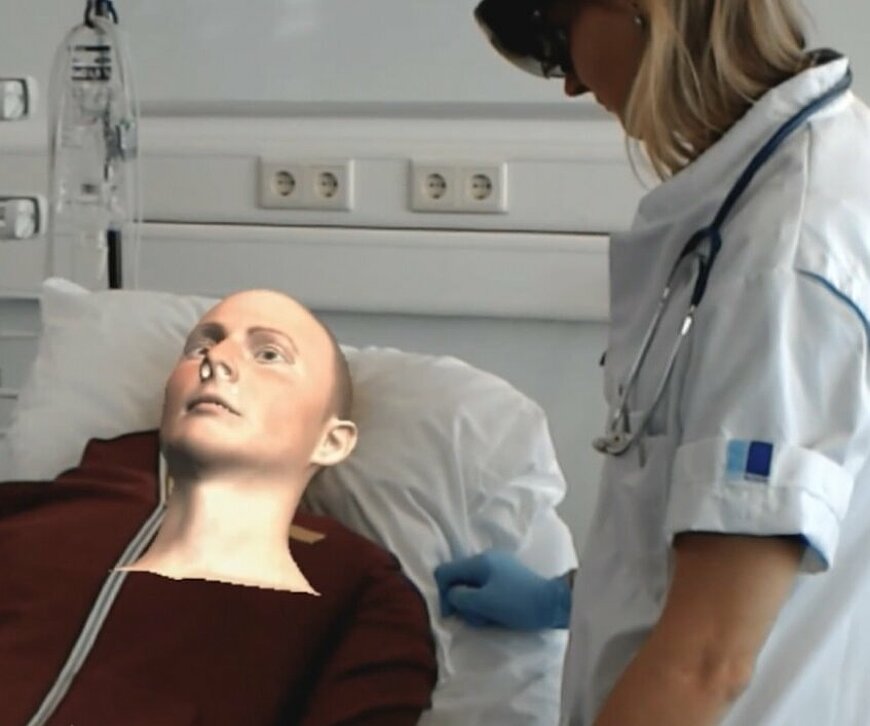Practice medical procedures on a life-like dummy patient from TrueSim

TrueSim developed a symptom-simulating dummy that helps trainee doctors in how to treat real patients. Therefore the start-up is rewarded with a Gerard & Anton Award.
If you could just make a life-like simulation of a sick patient in such a way that doctors and nurses can practice medical procedures in a realistic way. That could then save lives. That was the idea that Jasen Hashem and Pieter Tegelaers had when they founded their company TrueSim. The two are friends and have known each other since they worked as intensive care nurses at the Máxima Medical Center in the southern Dutch city of Helmond.

Since 2010, Hashem has increasingly focused on training medical practitioners but also works as an IC nurse. Tegelaers mainly works as an IC nurse but occasionally also trains medical staff.
After each evaluation of acute care training sessions that he gave, Hashem noticed that doctors and nurses found it difficult to practice on a dummy which did not show any disease symptoms nor a response to their actions. He had to explain this to the participants during the training. “The danger is that you can’t interpret that in the same way for everyone.”
Dummy simulates symptoms via AR glasses
The solution that Hashem came up with was to simulate symptoms on a dummy with the help of software integrated with a pair of augmented reality glasses. Doctors and nurses put these on if they want to train how to treat acute symptoms of specific conditions.
The advantage of this is that you can still look at each other face to face, Hashem explains. This is not possible when training via a virtual reality game because the real environment does not play a role in that.
So far, we do have a prototype, Tegelaers says. With this, doctors can learn to treat a patient who suffers from an allergic reaction (anaphylaxis) which causes their face to swell and turn red. When the nurse or doctor administers an adrenaline injection to the dummy, the nurse or doctor can see through the AR glasses that the swelling of the patient’s face starts to subside. This allows the person who is doing the training to instantly see the effect of their actions.
Shouldn’t be too complicated
The prototype is still a long way off from being a real training tool, Hashem states. “The user interface isn’t good enough yet. At the moment, you have to do all kinds of things before the program can work. If it’s too complicated, people won’t use it.”
So, that is why funding is needed. At this point in time, Tegelaers and Hashem think they need a hundred thousand euros to be able to develop a minimally viable product that hospitals can do trials with. They are in the middle of writing a business plan for this. What’s more, they are also planning to carry out tests at the Elkerliek hospital in Helmond. That’s where Tegelaers works. And also at the Erasmus MC training centre in Rotterdam, where Hashem works. “That has already been agreed to.”
Hashem and Tegelaers want to pitch to investors this September. “The product will get there no matter what,” Tegelaers says undaunted.
Practice during spare time
He is unable to say with any certainty whether or not there is a competitor lurking in the wings who might be working on a similar product. “A year and a half ago we had a patent search done to check if there is already a patent on this kind of technology. It turned out that this was not the case.”
If everything goes according to plan, there should be a finished product ready sometime in 2021. It would have great added value for hospitals and, of course, when it comes to saving people’s all because of the vast improvement it offers in training facilities. After all, this was the incentive to develop in the first place.
“At the moment, medical practitioners have to make time to attend training sessions. They usually do this in a group, even though they do not have a lot of time. This means you get them off the wards for an entire afternoon. If our product is available for training that focuses on treating a variety of conditions, doctors and nurses can train any time they want. For example, when it’s quiet on the wards. All that is needed is a dummy on a bed and the AR glasses with the accompanying TrueSim software.” A whole lot more efficient and far more educational as well!